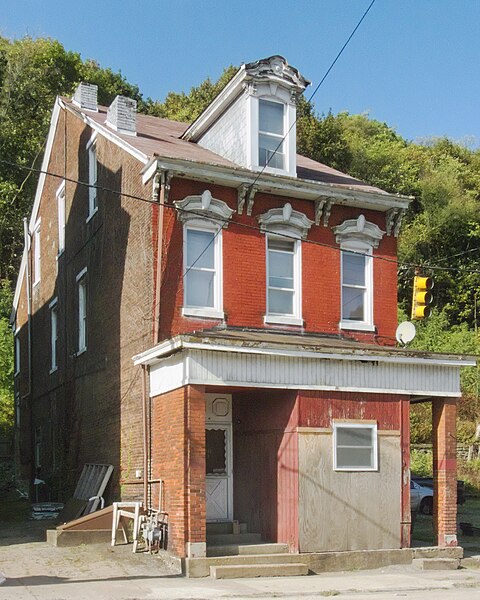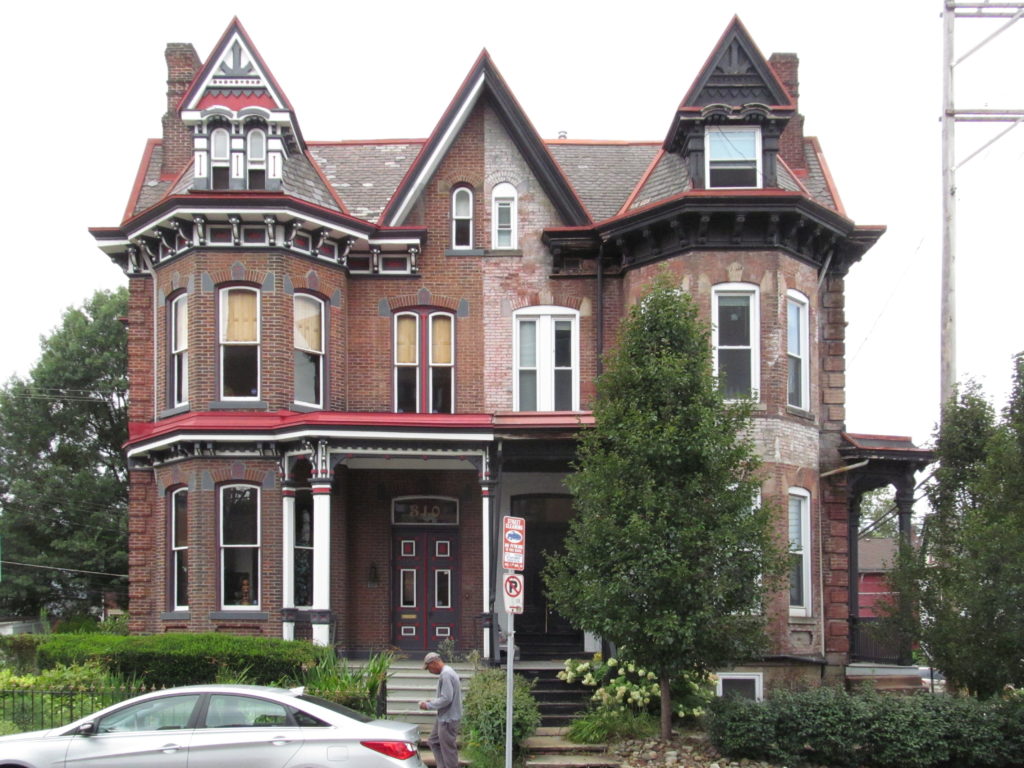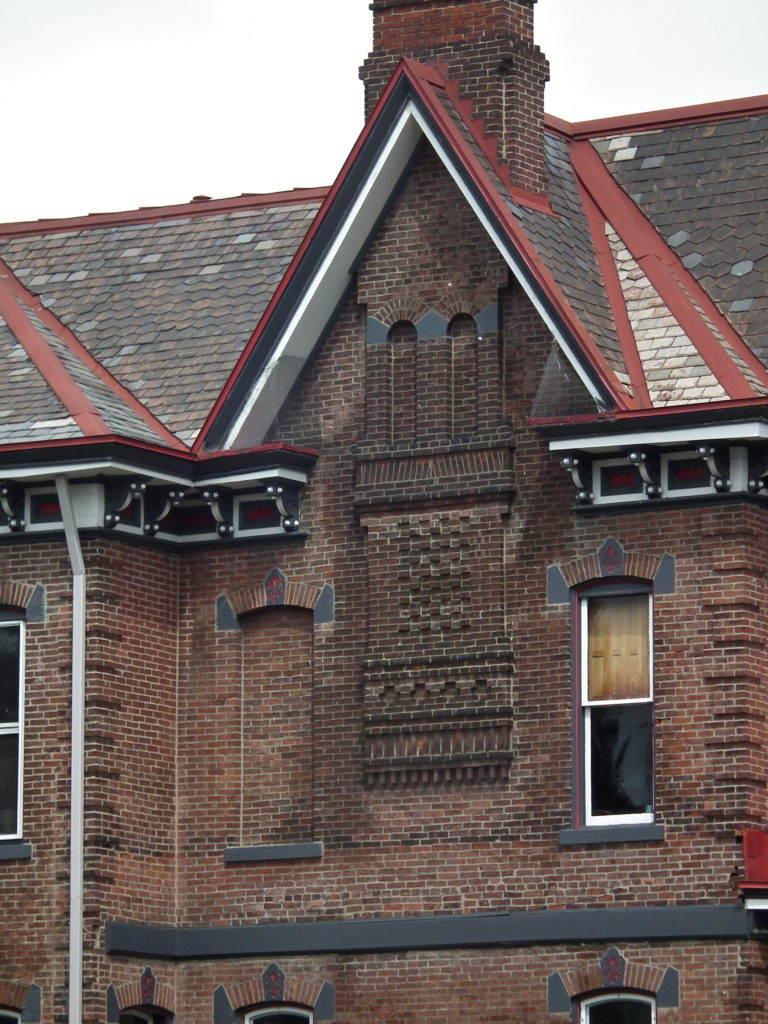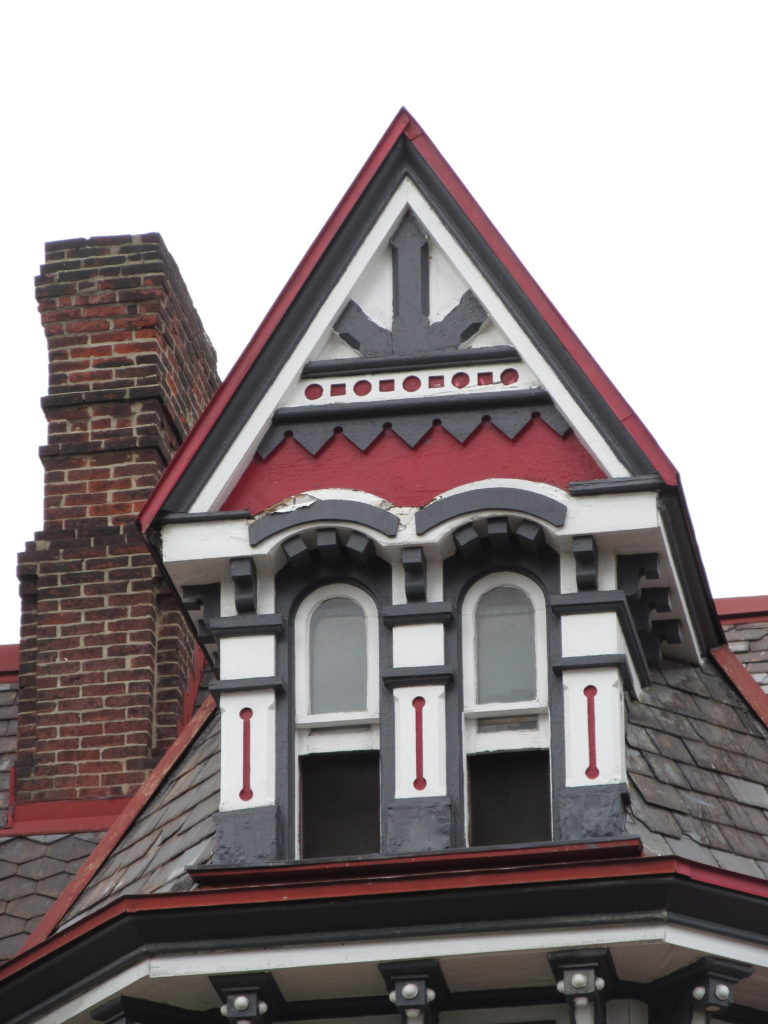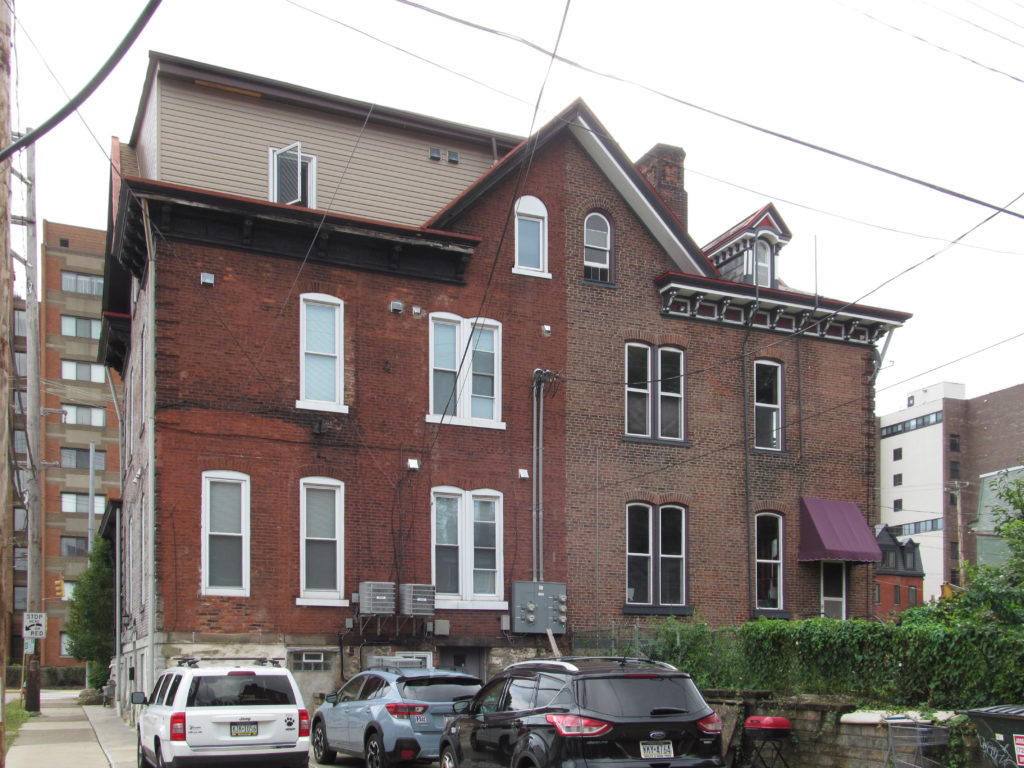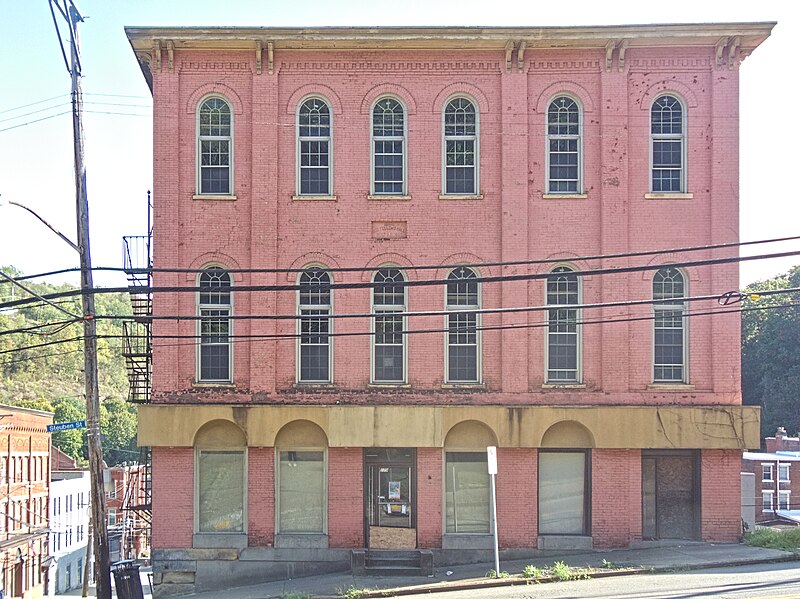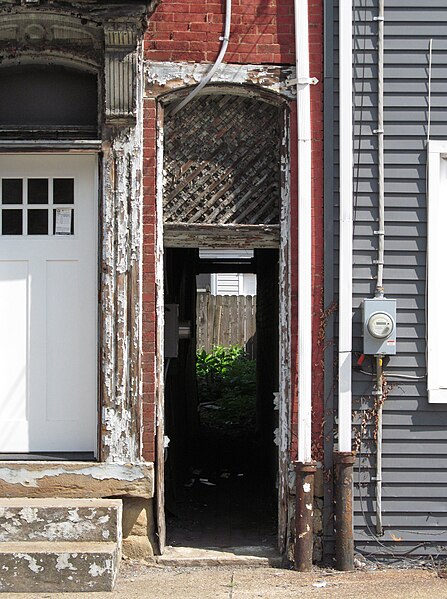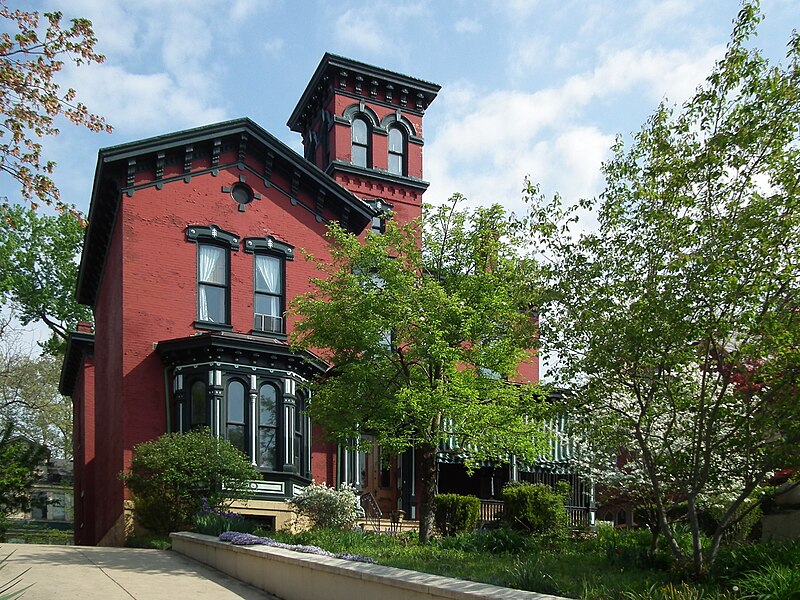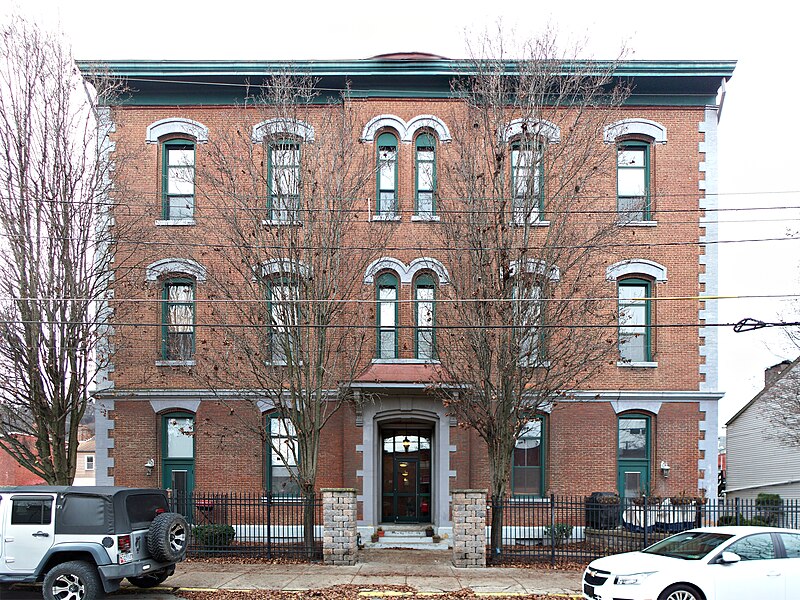
All the South Side histories tell us that this school was originally built in 1871, the year before Birmingham was taken into the city of Pittsburgh as part of the South Side. From old maps, however, it appears that only the central part of the school, invisible from the street today, was built that early. The two identical fronts, this one on 15th Street and the other on 14th Street, seem to date from the 1880s. In 1940, the building was sold to St. Adalbert’s parish up the street, which used it as a middle school. It spent more than sixty years as a Catholic school of one sort or another. The last incarnation of the Catholic school closed in 2002, and after that the school—like all the other closed schools on the South Side—was converted to apartments.




